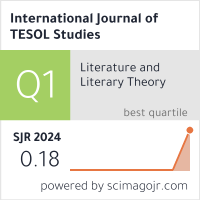2632-6779 (Print)
2633-6898 (Online)


Scopus
Ulrich’s Periodicals Directory (ProQuest)
MLA International Bibliography
MLA Directory of Periodicals
Directory of Open Access Journals (DOAJ)
QOAM (Quality Open Access Market)
British National Bibliography
WAC Clearinghouse Journal Listings
EBSCO Education
ICI Journals Master List
ERIH PLUS
CNKI Scholar
Gale-Cengage
WorldCat
Crossref
Baidu Scholar
British Library
J-Gate
ROAD
BASE
Publons
Google Scholar
Semantic Scholar
ORE Directory
TIRF
China National Center for Philosophy and Social Sciences Documentation
K. James Hartshorn
Benjamin L. McMurry
Brigham Young University, USA
Abstract
This study seeks to understand the effect of the COVID-19 pandemic on a group of university ESL
learners and their teachers in the U.S. While some schools quickly closed to protect students and
teachers, others transitioned to remote teaching and learning. In addition to challenges associated
with moving instruction to an online format, many teachers and students have had to grapple with
a variety of additional issues regarding health, employment, finances, and other concerns. With
the aim of better understanding the effects of the pandemic on students and teachers, researchers
prepared a survey that addressed stress levels, learning and teaching English, and remote instruction.
Participants indicated how important learning English was before and after the pandemic and
responded to an open-ended question soliciting their perspectives on what was most difficult during
the pandemic. The researchers looked at their responses, demographic information, and proficiency
gains to learn more about the impact of the COVID-19 pandemic on students and teachers. The
results of this study show that the effects of the pandemic increased stress for both students and
teachers across an array of contexts. Although still relatively important, the priority for teaching
and learning decreased for both the practitioners and their students during the pandemic due to a
variety of new stressors in their lives. The transition to online instruction was more challenging for
the students than the teachers. Results also show that during the pandemic students experienced less
language development for speaking than for writing.
Keywords
COVID-19, Intensive English Programs, Online teaching and learning, stressors